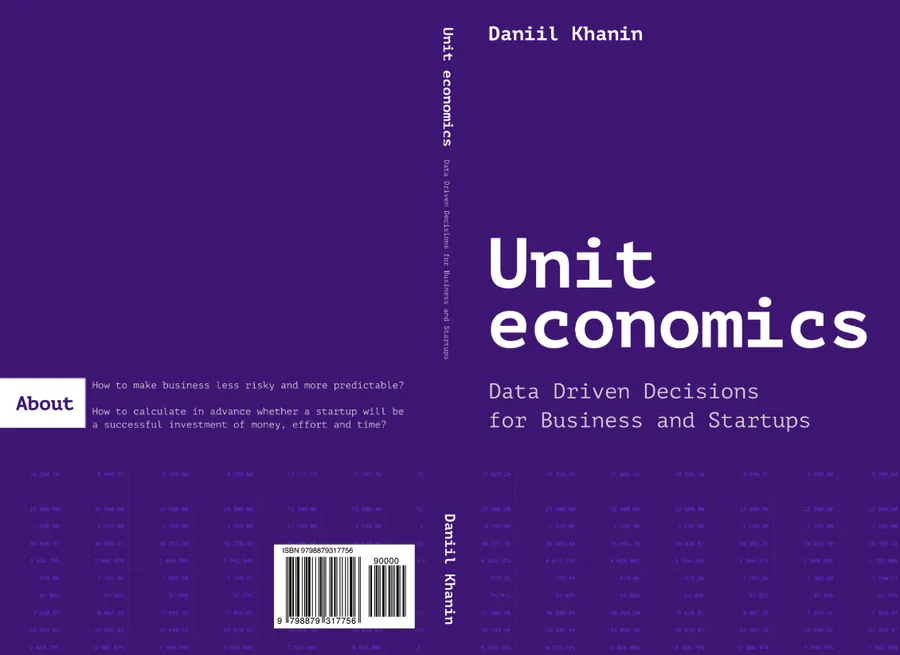Unit economics. Data Driven Decisions for Business and Startups

Foreword by Ash Maurya
Running a business without metrics is like flying a plane without instruments. Neither is a good idea when visibility is low. This is especially true in startups and early-stage products that operate in a constant fog of uncertainty as they frantically search for a repeatable and scalable business model.
But while measuring metrics used to be difficult, the pendulum has swung the other way. Today, it’s possible to measure every click on a website and user action. This explosion in metrics data, however, hasn’t resulted in more clarity. We now drown in a sea of non-actionable data.
Enter Unit Economics. In this book, Daniil shows you how to cut through this facade of vanity metrics and instead measure the output of a working business model using a handful of metrics that measure a product’s unit economics.
He shows you how to baseline growth and extrapolate performance from these unit economics. Along the way, he demystifies often misunderstood concepts like customer acquisition cost, lifetime value, and contribution margin with simple visuals that help you both internalize these metrics and learn how to measure them correctly.
He shares my love for Goldratt’s theory of constraints as it applies to optimizing business models. Too many entrepreneurs (and advisors) simply guess at what’s riskiest in a business model. But the stakes are too high for guessing incorrectly. When a startup prioritizes the wrong risks, it wastes already limited resources on suboptimal efforts that shorten its runway.
Daniil shows you a better approach that doesn’t rely on guessing. He shows you how to lay out a product’s unit metrics, like a series of steps on a factory floor, and systematically identify the slowest step or weakest link. Working on anything else, but the weakest link is premature optimization.
He highlights the importance of measuring your metrics as batches or cohorts and shows you how to normalize and attribute causality between user actions and business model results.
He ends the book by showing you how to turn your unit economics model into a full-blown financial model that you can share with investors to communicate your product’s value and growth potential.
Unit Economics is a practical handbook for anyone who wants to make better data-driven product and growth decisions. I hope you’ll implement his practical guidance and help pave the way to a world with better products for all.
Not more numbers, but actionable metrics.
Ash Maurya
March 16, 2024
Austin, TX
Information
- ASIN: B0CWTNXYJB
- Publisher: Independently published (March 24, 2024)
- Language: English
- Paperback: 216 pages
- ISBN-13: 979-8879317756
- Reading age: 12 - 18 years
- Item Weight: 10.6 ounces
- Dimensions: 6 x 0.49 x 9 inches